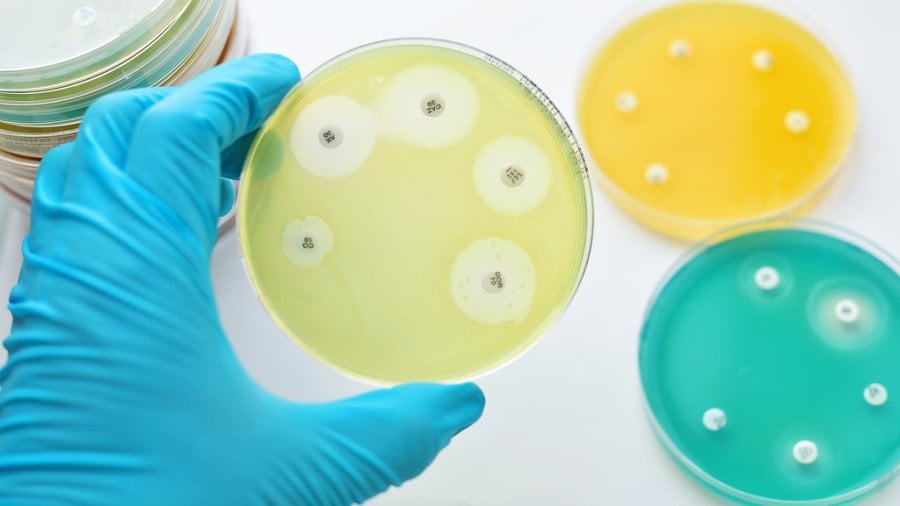
Antimicrobial resistance (AMR) is not a distant threat – it is happening now. Despite years of warnings, antibiotics continue to be overused and misused, contributing to a crisis responsible for 1.27 million deaths annually and linked to nearly 5 million more (Murray et al., 2022). If left unchecked, AMR could kill 10 million people per year by 2050 (O’Neill, 2016).
While policymakers recognise AMR as a serious issue, responses remain slow and uncoordinated. The key drivers – antibiotic overuse in human medicine, agriculture, and environmental pollution – are well-documented (Salam et al., 2023). Yet, weak regulations, economic pressures, and a lack of collaboration hinder progress. The One Health approach, which connects human, animal, and environmental health, offers a promising solution – but is it being implemented effectively?
Human Health: Are Stewardship Programs Enough?
Antimicrobial stewardship programs to control antibiotic use in hospitals and clinics have been beneficial (Salam et al., 2023), but they are mostly found in wealthier countries with strong healthcare systems. Meanwhile, global antibiotic use increased by 46% between 2000 and 2018, with a staggering 76% rise in low- and middle-income countries (Browne et al., 2021). Many of these countries lack access to proper diagnostics, leading to overprescription. Even in wealthier nations, unnecessary antibiotic use remains common, as short-term convenience often prioritizes long-term health.
Agriculture: Public Health vs. Economic Interests
The use of antibiotics in farming is a major contributor to AMR. Although the European Union banned antibiotic growth promoters in 2006, many countries continue their use, prioritising livestock productivity over public health (Van Boeckel et al., 2017). The Netherlands successfully reduced antibiotic use in animals by 56% between 2007 and 2012 through strict regulations and collaboration with farmers (Speksnijder et al., 2015). However, many nations resist similar measures due to economic concerns. Without enforceable global agreements, efforts to reduce antibiotic use in agriculture will remain inconsistent.
Environmental Contamination: The Overlooked Risk
The environmental dimension of AMR is often ignored. Wastewater from hospitals, farms, and pharmaceutical factories creates reservoirs of resistant bacteria that spread resistance genes through ecosystems (Krzemiński et al., 2020). Despite clear evidence, regulations to control this pollution remain weak. Addressing this issue requires stricter waste management policies and investment in better filtration technology to prevent antibiotics from contaminating the environment.
From Awareness to Action: The Time Is Now
The WHO’s Global Action Plan on AMR outlines five key objectives: raising awareness, improving surveillance, preventing infections, optimizing antibiotic use, and investing in research (World Health Organization, 2015). However, these efforts largely depend on voluntary national actions, leading to inconsistent results. A legally binding, globally coordinated strategy is needed to drive real progress.
While One Health is a powerful concept, its implementation is hindered by bureaucratic silos and conflicting priorities. Effective action requires stronger political commitment, better cross-sector collaboration, and clear accountability. Without these, One Health risks becoming another well-intentioned but underutilized strategy.
AMR is already reshaping medicine, food production, and the environment. Without urgent action, common infections could become deadly, surgeries too risky, and food supplies unstable. This is not just a medical crisis – it is a failure of global governance.
The question is not whether we need One Health – we do – but whether we are willing to act decisively. The world must choose between series, coordinated efforts or a future where antibiotics become ineffective. The time for hesitation is over.
Reference
Browne, A. J., Chipeta, M. G., Haines-Woodhouse, G., Kumaran, E. P. A., Hamadani, B. H. K., Zaraa, S., Henry, N. J., Deshpande, A., Reiner, R. C., Jr., Day, N. P. J., Lopez, A. D., Dunachie, S., Moore, C. E., Stergachis, A., Hay, S. I., & Dolecek, C. (2021). Global antibiotic consumption and usage in humans, 2000–18: a spatial modelling study. The Lancet Planetary Health, 5(12), e893-e904. https://doi.org/10.1016/S2542-5196(21)00280-1
Krzemiński, P., Markiewicz, Z., & Popowska, M. (2020). Entry Routes of Antibiotics and Antimicrobial Resistance in the Environment. In M. Z. Hashmi (Ed.), Antibiotics and Antimicrobial Resistance Genes: Environmental Occurrence and Treatment Technologies (pp. 1-26). Springer International Publishing. https://doi.org/10.1007/978-3-030-40422-2_1
Murray, C. J. L., Ikuta, K. S., Sharara, F., Swetschinski, L., Robles Aguilar, G., Gray, A., Han, C., Bisignano, C., Rao, P., Wool, E., Johnson, S. C., Browne, A. J., Chipeta, M. G., Fell, F., Hackett, S., Haines-Woodhouse, G., Kashef Hamadani, B. H., Kumaran, E. A. P., McManigal, B.,…Naghavi, M. (2022). Global burden of bacterial antimicrobial resistance in 2019: a systematic analysis. The Lancet, 399(10325), 629-655. https://doi.org/10.1016/S0140-6736(21)02724-0
O’Neill, J. (2016). Tackling drug-resistant infections globally: final report and recommendations. Tackling drug-resistant infections globally: final report and recommendations, 84 pp.
Salam, M. A., Al-Amin, M. Y., Salam, M. T., Pawar, J. S., Akhter, N., Rabaan, A. A., & Alqumber, M. A. A. (2023). Antimicrobial Resistance: A Growing Serious Threat for Global Public Health. Healthcare, 11(13), 1946. https://www.mdpi.com/2227-9032/11/13/1946
Speksnijder, D. C., Mevius, D. J., Bruschke, C. J. M., & Wagenaar, J. A. (2015). Reduction of Veterinary Antimicrobial Use in the Netherlands. The Dutch Success Model. Zoonoses and Public Health, 62(s1), 79-87. https://doi.org/https://doi.org/10.1111/zph.12167
Van Boeckel, T. P., Glennon, E. E., Chen, D., Gilbert, M., Robinson, T. P., Grenfell, B. T., Levin, S. A., Bonhoeffer, S., & Laxminarayan, R. (2017). Reducing antimicrobial use in food animals. Science, 357(6358), 1350-1352. https://doi.org/doi:10.1126/science.aao1495
World Health Organization. (2015). Global Action Plan on Antimicrobial Resistance. World Health Organization. https://www.who.int/publications/i/item/9789241509763
If you enjoyed this article and would like to build a career in global health, we offer a range of MSc programmes covering health and data, infectious and tropical diseases, population health, and public health and policy.
Available on campus or online, including flexible study that works around your work and home life, be part of a global community at the UK's no.1 public health university.
